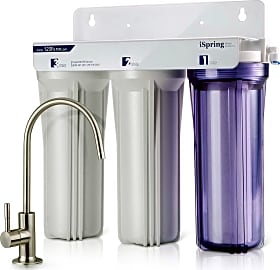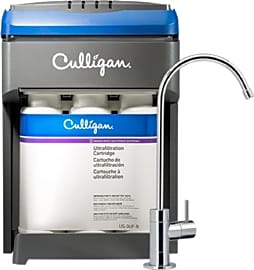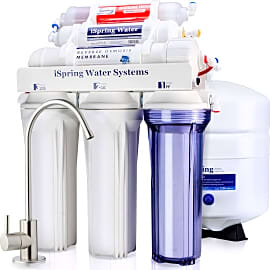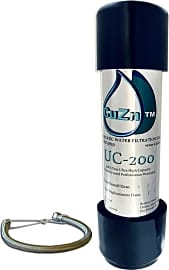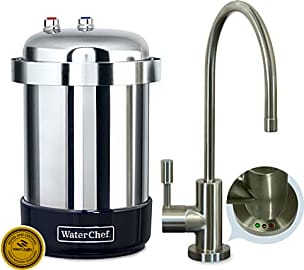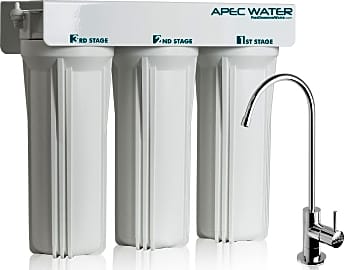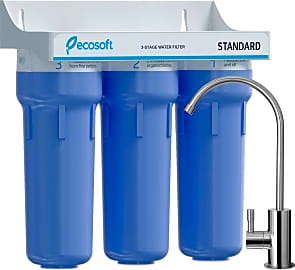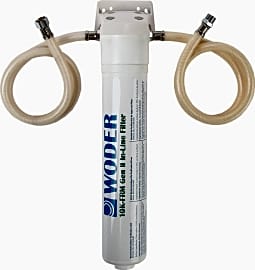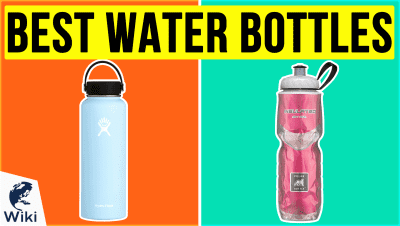The 10 Best Under Sink Water Filters

This wiki has been updated 32 times since it was first published in December of 2017. When it comes to the taste and safety of your drinking water, you can't always depend on your local waste treatment plant to remove every contaminant before it enters your home. Give yourself and your family the upper hand with one of these under sink filters. Many offer multi-stage processes designed to remove a variety of impurities, including lead, mercury, and chlorine. When users buy our independently chosen editorial choices, we may earn commissions to help fund the Wiki.
Editor's Notes
January 20, 2020:
While reverse osmosis systems have been criticized for removing too many things out of your water (such as essential minerals), more recent models like the Home Master Artesian and the iSpring RCC7AK have addressed this issue by adding an extra stage to the process that reintroduces minerals like calcium and magnesium, resulting in a more balanced alkalinity.
Three-stage filtration systems like the iSpring US31 and the Culligan US-3UF are often preferred simply because they are easier to install than reverse osmosis, and don't produce any waste water.
While single-stage models like the Cuzn UC-200 are not much cheaper than the three-stage choices, we included some of the top rated models as they are perfect for tiny kitchens where space is at a premium, plus they are the easiest to install and maintain.
Special Honors
Aquasential Tankless Culligan has devised a tankless reverse osmosis system as a space saving option. It can dispense as quickly as a traditional unit, provided your home has sufficient water pressure. It's also an excellent choice for commercial usage as this unit can produce over 600 gallons of fresh water per day. Because it's far beyond what even a very large family would need, it might not make sense to spend the extra money on this unit and the higher maintenance costs. culligan.com
A Brief History Of Water Filtration
While they weren't in a position to do anything about it just yet, their discovery would set the stage for future understanding of pathogens in drinking water.
Clean drinking water is the engine that drives civilization. Early cities had to be established in locations where fresh water was plentiful, because you had to wait a long time for the Sparkletts truck to arrive in the 15th century B.C.E.
Speaking of the 15th century B.C.E., that just happens to be when the first known water treatment practices started. Prior to that, people just had to find a source that looked promising, drink, and then wait to see if they'd die.
The first method for purifying water, predictably enough, was boiling it. This is a surprisingly effective technique, especially for killing microorganisms — but based on their other methods, which included filtering water through sand, it was probably more of a lucky guess than any sort of scientific insight.
Hippocrates, the Greek father of medicine, was interested in developing techniques for purifying water as early as the 4th century B.C.E. He invented a crude filtration device that ran boiled water through a cloth bag, which came to be known as a "Hippocratic sleeve."
The next big breakthrough in water purification was actually kind of a throwback to an old breakthrough. Sir Francis Bacon dreamed up the idea of desalination in 1627 C.E., and he believed that saltwater could be turned into drinking water if it was filtered through sand. Unfortunately, there were no ancient Egyptians around to tell him that's simply a recipe for sandy water.
When Antonie van Leeuwenhoek and Robert Hooke put their newly-invented microscopes to the test, they discovered that there were actually quite a few tiny organisms swimming around in there. While they weren't in a position to do anything about it just yet, their discovery would set the stage for future understanding of pathogens in drinking water.
The first water treatment plant was installed in London in 1829, using — you guessed it — a sand filter. The difference is, this one actually worked, and soon laws were passed requiring all public water be filtered in some way.
The United States lagged far behind in this regard, as it wouldn't be until 1974 that the Safe Drinking Water Act was passed. However, we've done a lot of catching up since then, and now filtered water is huge business.
Of course, our ancestors would probably be horrified to see us drinking water so dirty that it didn't even have any sand in it.
Just How Safe Is Your Water, Anyway?
It's important to know how safe your drinking water is. Then again, it's also one of those things you probably feel like you don't want to know.
The good news is that, in most of America at least, drinking water is safer than it's ever been. That's due to a push in the 1970s to clean up water supplies, due in part to outrage and disgust after the Cuyahoga River in Cleveland actually caught on fire in 1969.
However, the aforementioned Safe Drinking Water Act, coupled with the creation of the Environmental Protection Agency, helped clean up most municipal water supplies. This meant protecting them from pollution, naturally-occurring chemicals like arsenic, sewage overflows, and more.
These people should definitely consider investing in some sort of filtration system, and possibly even switching to the bottled stuff.
Today, most water treatment plants use a five-step process to clean up water before it gets to you. First, they bring in untreated water and mix it with alum, which attracts dirt and debris and coagulates. This leads directly to the next step, sedimentation, which is when they wait for all the chunks of nastiness to sink, and then the clearer water moves on to the next stage: filtration.
The water is passed through a series of filters, made of sand, gravel, and charcoal, that clean out smaller pieces of debris and some microbes. The rest of the microbes are killed off in the disinfection process, in which a small bit of chlorine is added to the liquid to finish off any remaining bugs.
From there, the water is stored in a tank while the chemicals work their magic. Once it's been sufficiently treated, it's sent through the pipes and out of your faucet. The water that emerges is extremely safe and clean — in most urban areas, anyway.
Anyone living in rural parts of the country, especially those drinking well water, are much more likely to encounter contaminants. These people should definitely consider investing in some sort of filtration system, and possibly even switching to the bottled stuff.
And while your water is probably safe if you live in the city, there's no guarantee it will stay that way. Much of our infrastructure is incredibly outdated, and and as the residents of Flint can tell you, contaminants like lead can still infiltrate our drinking water.
Easy Ways To Drink More Water
You already know that you need to drink more water — but it's hard (especially when you have to explain to your boss why you spend 30 minutes out of each hour in the bathroom).
The easiest way is to get a water bottle and carry it around with you. You'll be surprised at how often you'll drink if water's readily available, and you won't go broke buying a new plastic bottle every few hours. Some even let you infuse the water with fruit, vegetable slices, herbs, or whatever suits your fancy. They're fantastic for anyone who needs something a little more flavorful than basic H2O.
There are apps that monitor your intake, and remind you when it's time to drink. They can definitely help keep you on-track — and honest. Of course, if you have a regular supply of clean, filtered water, you may find that it's easier than ever to get your daily dose. It's amazing how much easier it is to down a glass when it doesn't taste like zinc.


